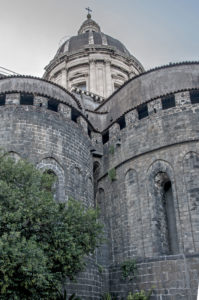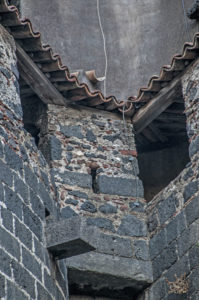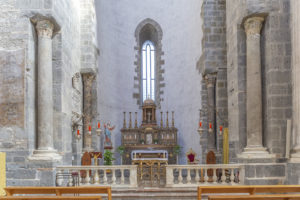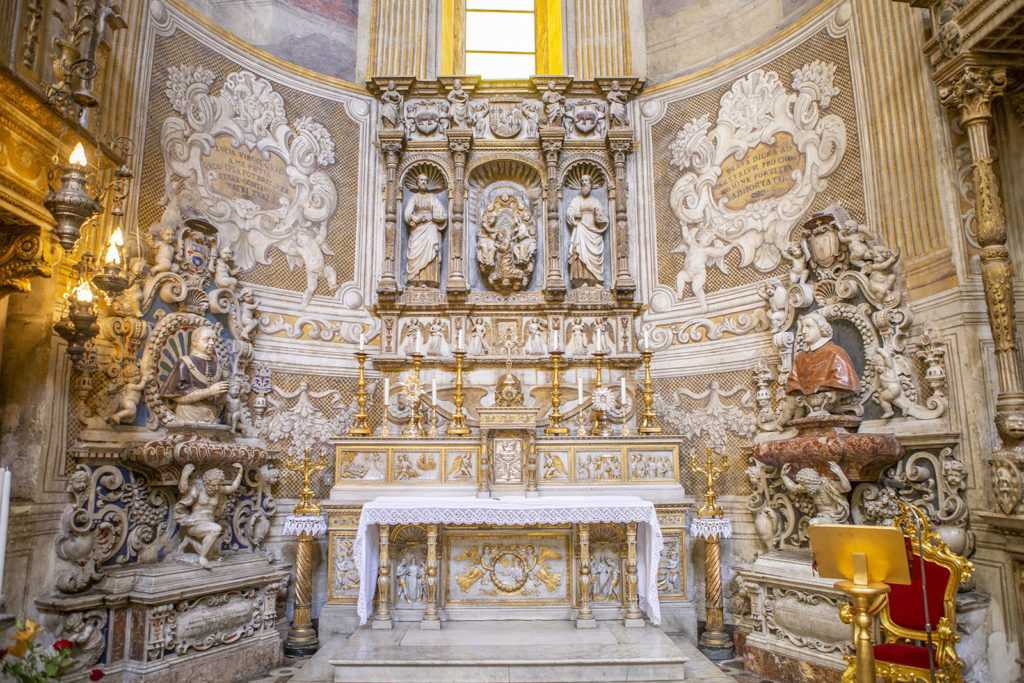 In the late 11th century, during the time of Roger II, the cathedral of
Sant'Agata
In the late 11th century, during the time of Roger II, the cathedral of
Sant'Agata
(St. Agatha) was built where the Roman baths were located (which are now accessible and can be visited).
When the Normans conquered Sicily and drove out the Arabs, they decided to build a large, important church in the heart of the ancient city of Catania.
Though the cathedral has undergone many transformations over the centuries, the
ancient structures of the apses
from the Norman period are still preserved today.
To build the new church, Roger II chose a site close to the sea and had an “Ecclesia munita” built, i.e. a fortified church. His decision was not accidental. This way, the city was defended against foreign attacks and the religious power of the Bishop of Catania was demonstrated.
For this reason, thick walls,
Embrasures
, corridors for
Patrols
and
Merlons
were built. They are still visible today in the external parts of the
Transept
and the
Apses
.
The Norman structures are easily recognisable because unlike the rest of the building, they are made entirely of
lava stone
bricks.
Inside, on the other hand, the ancient Norman structure can only be seen in the left apse.


The other two (the main apse and the chapel of St. Agatha) are widely decorated and colourful, and both have lost the rigour and austerity of the ancient structure. The left apse still features the old square stone with no decoration.
